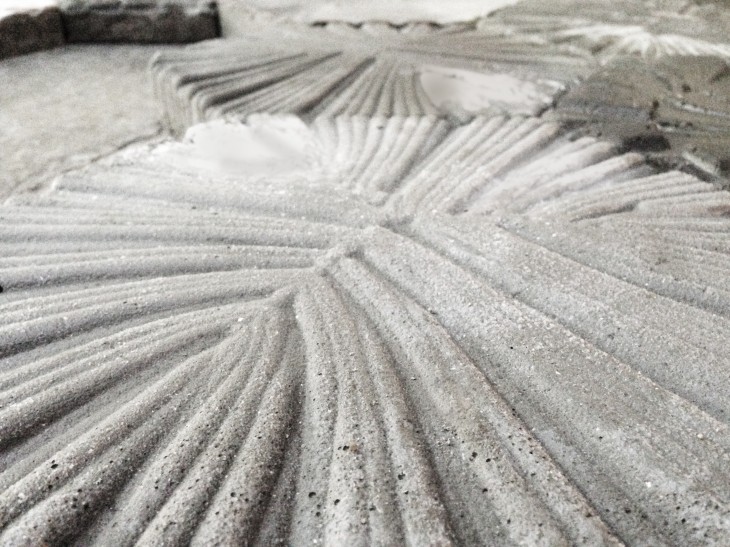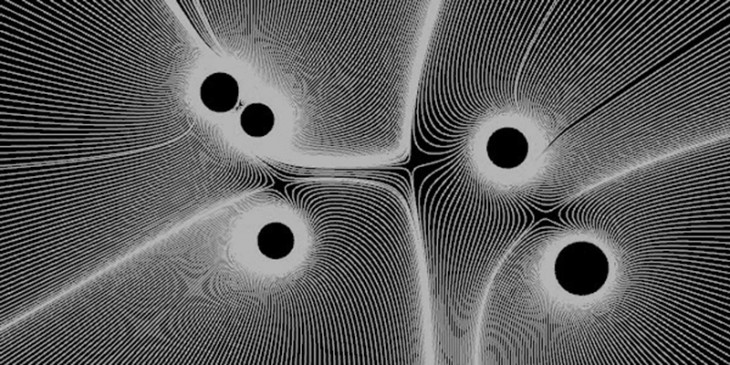 The design idea used to create the tile was a method of force fields. In creating this seamless pattern multiple spin forces were merged together and the effect of field lines was extended for better visualization and incorporation into the water evacuation system.
The design idea used to create the tile was a method of force fields. In creating this seamless pattern multiple spin forces were merged together and the effect of field lines was extended for better visualization and incorporation into the water evacuation system.
 The slope of the tile decreases gradually outwards following the rhythm of the water canals and pattern, enhancing the water evacuation.
The slope of the tile decreases gradually outwards following the rhythm of the water canals and pattern, enhancing the water evacuation. 

 The reference for the picture and original grasshopper script is:
The reference for the picture and original grasshopper script is:
http://www.designcoding.net/force-fields-revisited/
To discover our milling strategy we experimented repeatedly with RhinoCam. In the end, for our design, we selected the 12 mm ballmill as it gave us the optimal finish and kept our machining time within the 2 hour limit. We first ran a horizontal roughing to carve the canals then curve machining to overlay the thin contour lines. In the end we didn’t do a perimiter engraving in order to allow for continuity of the lines over the edge and side of the tiles.




![CropperCapture[2]](https://legacy.iaacblog.com/maa2013-2014-digital-fabrication/files/2013/12/CropperCapture2-730x339.jpg)